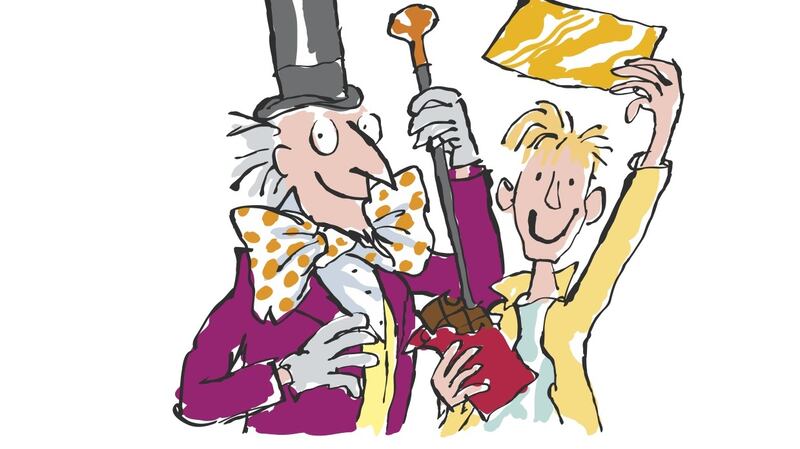Piffsquiffling bogswoddle. That's how I would imagine Roald Dahl would describe today's over-egged food culture. But (sorry Roald) a foodie is what he was along with lots of other things: businessman, fighter pilot, spy, curmudgeon, charmer and genius children's storyteller.
It's one of Dahl's lesser known (and clunkier) short stories for adults that hints at how much he would have hated being described as a gourmet. Simply called Taste it's set at a dinner party thrown by a wealthy stockbroker who "seemed to be somewhat embarrassed, almost ashamed to find that he had made so much money with so slight a talent".
The star guest is Richard Pratt "a famous gourmet" and Pratt bets he can guess the precise provenance of the claret in return for the hand of the stockbroker's 18-year-old daughter (yes, really). Pratt is as odious a character as any in Dahl's children's books, described in full glistening rubber-lipped detail as he tastes the wine. After much theatrical deliberation Pratt nails the vineyard and wins the bet. But then he is unmasked as a cheat by the maid who presents him with the reading glasses he left in the room where the claret had been left to breathe before dinner.

Dahl's love of food, rather than pompous foodies, wafts through his memoir of early childhood, Boy. He devotes a chapter to the local sweetshop in Llandaff in Wales where he would gaze in the window and dream.
His two favourites were sherbet suckers and liquorice bootlaces, despite the dire warning from a friend’s father about how liquorice bootlaces were made. The stewed and mashed up bodies of dead rats was poured out of a vast cauldron onto the floor in the factory, the friend’s father had said. And then this would be rolled by steamroller into a giant black pancake which cooled, hardened and was cut into strips to make the bootlaces.
The sweet shop owner Mrs Pratchett could have come from the pages of The Twits. Dahl described her as a "small skinny old hag with a moustache on her upper lip and a mouth as sour as a green gooseberry". When they found a dead mouse under the floorboards in school Dahl slipped it into the gobstopper jar in revenge for her hostility. The prank resulted in Dahl and his friends being caned by his headmaster, egged on by Mrs Pratchett from an armchair in the corner.
Dahl’s Norwegian mother was furious, he wrote, and told the headmaster “they don’t beat small children like that where I come from”. The violence and grimness of British public schools where you ate “porridge for breakfast that seemed full of little round lumpy grey sheep’s droppings” was a world away from the warmth and comfort of family and home.
In the summers from the ages of four to 17 home was Norway. After a stomach-churning sea journey from Newcastle to Oslo there was a big family reunion dinner with his mother's parents and sisters. The feast was always fish. "And when [the Norwegians] say fish they don't mean the sort of thing you and I get from the fishmonger. They mean fresh fish that has been caught no more than 24 hours before and has never been frozen or chilled on a block of ice."
The celebration had at its heart “a massive fish, a flounder, as big as a tea-tray and as thick as your arm,” Dahl said. The fish was carved and put onto the plates with hollandaise sauce and boiled new potatoes. “Nothing else. And by gosh, it was delicious.” The taste of the butterscotch ice cream with its crispy chips of burnt toffee that followed “was something you dreamed about for days afterwards,” Dahl wrote.
That monumental sweet tooth is what Dahl is remembered for. In the Roald Dahl Museum and Story Centre in the Buckinghamshire village of Great Missenden the contents of his writing shed from his nearby home Gipsy Cottage have been reassembled.
Visitors (like me a few years ago) can look at the original chair and sit in a scratchy replica chair, balancing a makeshift green baize covered writing board on the two arms, raised to a perfect tilt with a large cardboard tube sellotaped to the underside. Odd as it looks, it’s extremely comfortable.
Beside him sat a strange pewter-coloured ball that looks like a cannonball. It's the tightly compressed silver foil wrappers from the bar of Cadbury's Dairy Milk that Dahl ate every lunchtime when he first worked for Shell Oil in London. Over three years in the 1930s each day he added another wrapper until the ball grew to its impressive size, like a kind of weird chocolate muncher trophy.
Reading Dahl makes us hungry because food was yearning to him. It was all the important stuff: love, home and the freedom to eat a chocolate bar every day.
And that love of chocolate started at his secondary public school Repton where the boys were used as chocolate testers by Cadbury. A plain grey cardboard box would arrive with 12 bars of chocolate inside. Eleven of the 12 were new inventions. The twelfth was a well-known favourite (the now gone Cadbury’s Coffee Cream). “All of us entered into this game with great gusto, sitting in our studies and nibbling each bar with the air of connoisseurs, giving our marks and making our comments. ‘Too subtle for the common palate,’ was one note that I remember writing down,” Dahl said, the admission of a teenage food snob.
More importantly the testing got him imagining the inventing room in a chocolate factory. And we all know where that went.



















